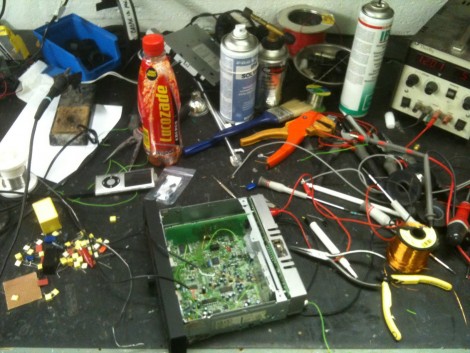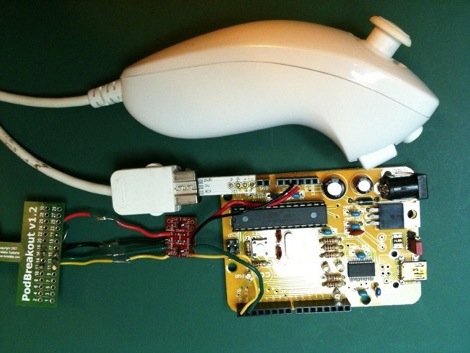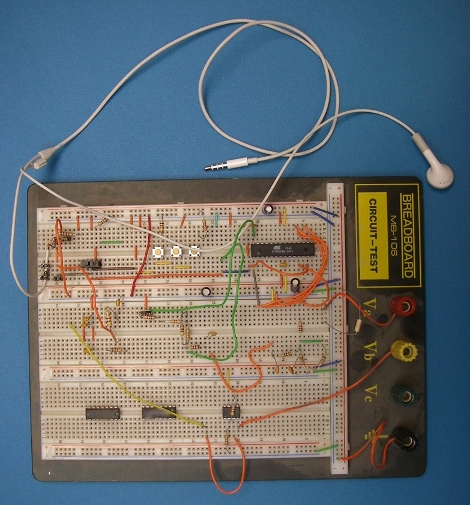
[Dave] pulled the head unit out of his dashboard to add an iPod input. He took a much more invasive route than the other hack we saw a few days ago. He actually patched into the audio lines going from the Dolby reader head chip to the amplifier.
The first step was to trick the deck into thinking it had a cassette inserted. He scoped an enable pin on one of the chips to discover the timing and emulated that signal using a PIC microprocessor. From there he popped off the chip that reads the tape data, patching directly into the audio out traces. This presented some noise issues when charging the iPod but [Dave] fixed that with some decoupling capacitors.














